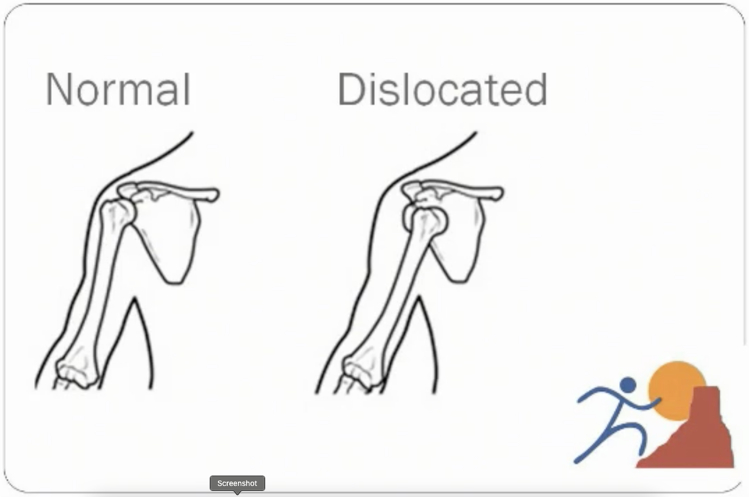Diagnosing and Treating Shoulder Instability
December 7, 2022
Hello and welcome to Yuma Health and Happenings. I’m Dr. Ron Clark, Orthopedic Surgeon and founder of The Bone and Joint Center of Yuma. Today I want to talk about the shoulder with its amazing form and functions. We’ll also discuss what happens when the shoulder gets damaged and stops performing those functions.
How the Shoulder Functions
The shoulder is comprised of three separate bones: the arm bone, the shoulder blade, and the collar bone. The shoulder is connected to the rest of the body by the inner end of the collar bone and supported by muscles that connect to the neck and upper back.
The shoulder blade is completely covered by muscles and lies on the back of the rib cage. The major joint of the shoulder is where the arm bone and the shoulder blade meet, but the end of the collar bone also connects with the shoulder blade at a different location. This joint is also a flexible joint.
The fact that the shoulder blade can glide over the rib cage makes for a third joint and increases the movement that our arms can make. The surface covering the arm bone and shoulder blade socket is called joint cartilage and is 70% water. This surface allows the two ends of the bone to move smoothly over each other.
Because the upper end of the arm bone is round and the shoulder blade bone forms a shallow cup, the shoulder is considered a ball and socket joint. This explains how we can use our shoulders to move our hands all around our head and body and is the joint of the body with the greatest amount of movement.
Since the socket side of the joint is much smaller than the arm bone is, a great deal of force and energy can be passed through the muscles and tissues that hold the shoulder together. Many of the common shoulder problems occur around the muscles and the tissues that are supposed to hold the shoulder bones together.
Potential Injuries to the Shoulder
One of the injuries that occurs to the shoulder is called a dislocation. With this injury the round portion of the upper arm bone is forced out of the socket, causing immediate pain and the inability to move the shoulder.
A deformity around the shoulder is felt or visible. In most situations, the only way that the shoulder can be dislocated requires physical tearing or damage to the restraining tissues of the joint. There are a few individuals who have flexible joints that have the capacity to slip their bones out of joint without any physical injury.
In persons under the age of 40, the damage to the joint tissue is usually around the socket side of the joint. In persons over the age of 40, the damage is frequently located throughout the muscles called the rotator cuff.
How to Treat a Dislocated Shoulder
Once a shoulder has been completely dislocated, it requires immediate medical care, and an untrained person should not attempt to put the joint back into place. The shoulder is usually put back into place at an emergency center by a physician and x-rays are taken to ensure that a fracture has not also occurred. The shoulder is then placed into a sling and rested for a period of 3-4 weeks. A program of gradually increasing activity is often provided with a physical therapist.
Persons under the age of 26 at the time of dislocation have a 50% rate of repeat dislocation, with those involved in collision type sports such as football or rugby having an even higher chance of repeat dislocation.
Many times, an MRI scan will show that there is damage to the surrounding joint tissue following a dislocation, so the area of injury can be identified. In persons over the age of 40 who have dislocations that cause injury to the rotator cuff, the care is directed to repairing the damaged cuff tissues.
When an individual has had more than two dislocations, there usually has been enough damage to the tissue that the shoulder may come out of the socket with very low energy. Their shoulder may dislocate while reaching to put on a blouse or sweater or when reaching up and out to turn on a light switch. This phenomenon is akin to shorts with an elastic waist band that is too loose after being through the laundry too many times.
Diagnosing Shoulder Instability
While first-time dislocations are generally treated with rest and physical therapy exercises, those who experience more than one dislocation are frequently advised to consider surgical care to stabilize the shoulder.
Treatments for repeated shoulder dislocations involve surgery that will re-attach the damaged tissue to the bone or tighten the capsule around the upper arm bone so that it will not come out of place again. Over the last decade, this type of understanding related to the cause of shoulder dislocations and treatments available for care have dramatically increased the numbers of persons who can receive treatment.
During surgery, a doctor repairs the damaged rim of the shoulder socket using a special tack that is made from a material that dissolves slowly over a few months’ time. Your physician will reattach your labrum to the bone using a small anchor.
Recovering After Surgery
Application of cold, anti-inflammatory medications, and restriction to activity is key for allowing the shoulder to recover after surgery. The recovery is usually at least 6 months before vigorous throwing or contact sports will be allowed. Low demand activities, such as driving and typing, can usually be accomplished after 6 weeks. Strengthening exercises are usually started after three months and continued for up to a year following surgery.
To learn more about repairing shoulder instability with surgery, contact our team at The Bone and Joint Center of Yuma.